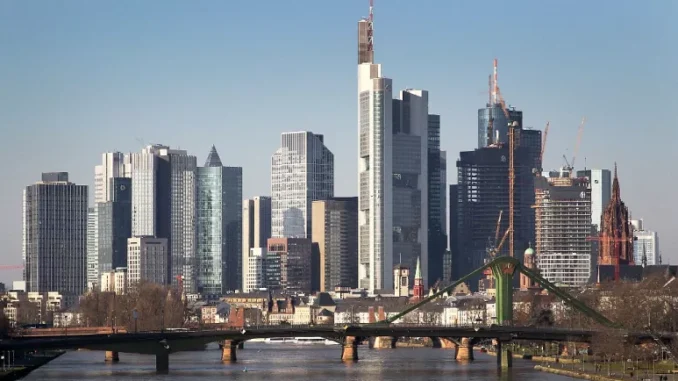
The German economy faces an uphill challenge as recent economic data has revealed with its health dependent on a few pending factors. Euronews Business takes a look at some of them.
Germany’s economy continues to remain under pressure as indicated by recent economic data with its gross domestic product (GDP) shrinking on Friday 24 November and its manufacturing sector still in contraction territory.
However, the global Purchasing Managers’ Index (PMI) data for the country, which summarises whether market conditions are expanding, staying the same, or contracting, came in at 47.1 in November – up from October’s 45.9 and the highest since July.
However, as the PMI number is under 50, in the world of economics, it means a sign of contraction – and for Germany, it is the fifth consecutive month in the sub-50 contraction territory, symptomatic of an impending recession.
What’s dragging on Germany’s economy?
Moreover, significant declines in residential constructions and new orders, along with a drastic fall in affordability, are major challenges for the economic powerhouse of Europe, and it will continue to face these headwinds moving into 2024.
Here are some of the things we can follow to gauge the health of the German economy going forward.
Residential builds
First of all, the residential construction sector in Germany in October showed an increase in the number of cancellations as 22.2% of companies cancelled projects, according to data from the IFO economic institute. It marks the largest increase since 1991.
Why is this happening? This is due to the global macroeconomic climate with rising debt levels and G7 countries tightening lending standards with many central banks putting interest rates higher for longer, which combined is not a very conducive environment for growth.
If this trend exacerbates then consumers will face further pressure on their incomes moving into the new year.
New construction orders
We can also see that new orders for constructions have been declining with companies reporting that the fall in orders increased from 46.6% in September to 48.7% in October – for context, it was only 18.7% in October 2022. Which is a whopping 166% year-over-year (YoY/0 increased drop in orders.
In Germany, the construction sector contributes 6% to the country’s GDP and accounts for a fifth of total output, and one in 10 jobs.
It is instructive to mention here that after the Covid-19 pandemic, when the money supply was at its peak, and interest rates extremely low, billions of euros were injected into this sector resulting in overpriced valuations with house prices rising 66%.
Interestingly, construction activity/output rose by 16% between 2015 to 2022.



